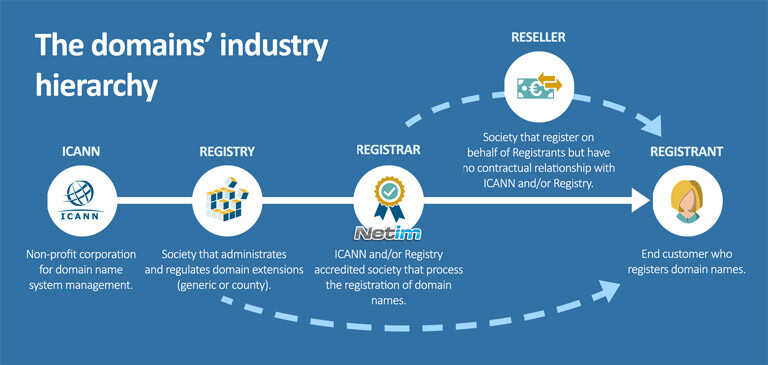
A domain name itself comprises two elements: before and after “the dot”. The part to the right of the dot, such as “com”, “net”, “org” and so on, is known as a “top-level domain” or TLD. One company in each case (called a registry), is in charge of all domains ending with that particular TLD and has access to a full list of domains directly under that name, as well as the IP addresses with which those names are associated. The part before the dot is the domain name that you register and which is then used to provide online systems such as websites, email and so on. These domains are sold by a large number of “registrars”, free to charge whatever they wish, although in each case they pay a set per-domain fee to the particular registry under whose name the domain is being registered.
ICANN was formed in 1998. It is a not-for-profit partnership of people from all over the world dedicated to keeping the Internet secure, stable and interoperable. It promotes competition and develops policy on the Internet’s unique identifiers. ICANN doesn’t control content on the Internet. It cannot stop spam and it doesn’t deal with access to the Internet. But through its coordination role of the Internet’s naming system, it does have an important impact on the expansion and evolution of the Internet.
